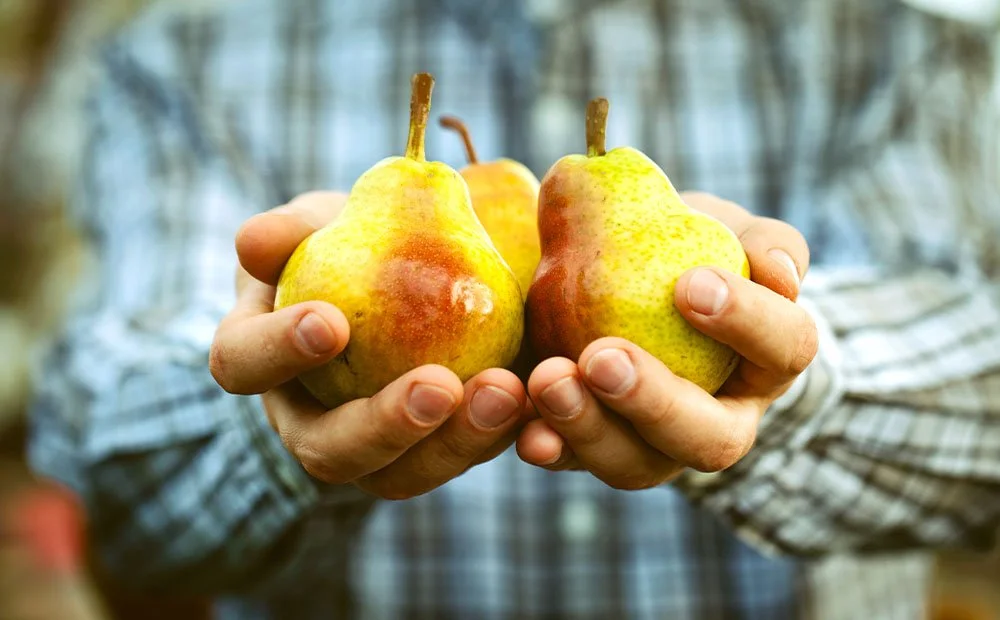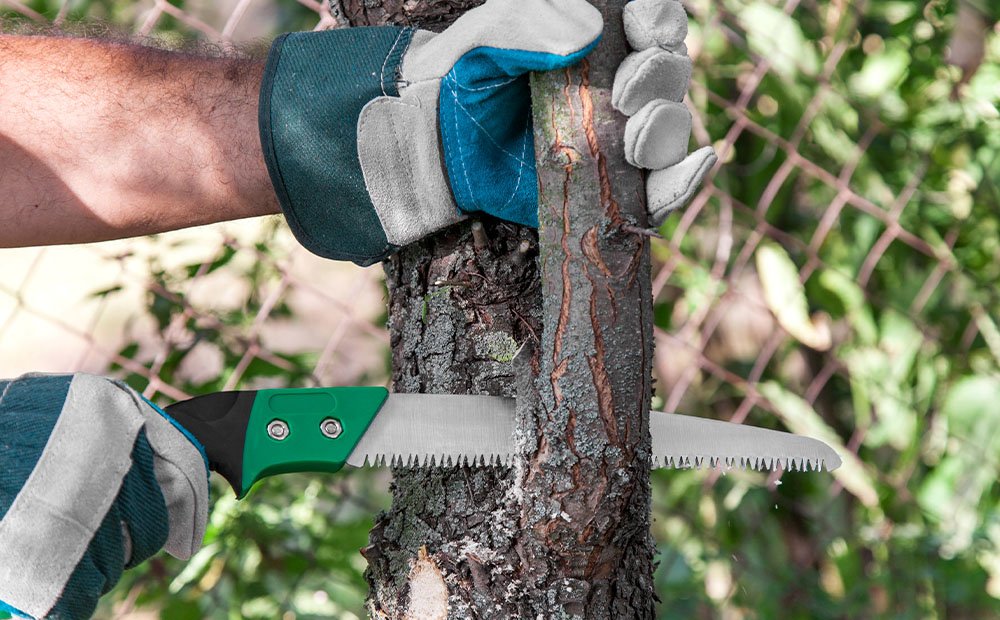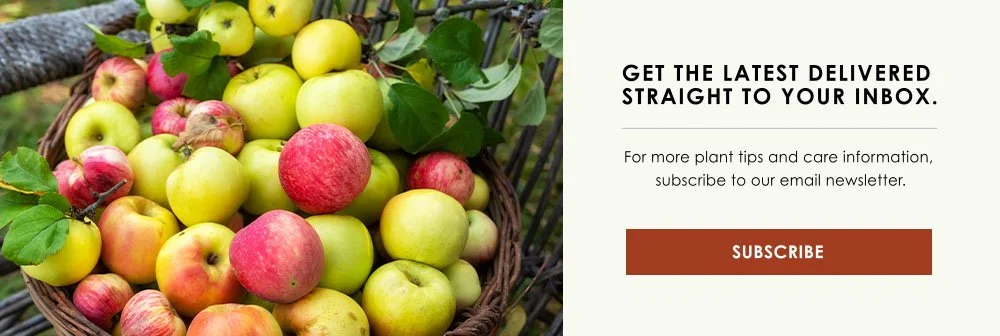HOW TO HARVEST AND CARE FOR YOUR FRUIT TREES
Make the most of your harvest and keep your fruit trees healthy! This blog will focus on pruning, managing an abundance of fruit to harvest, and preventing and repairing the damage of heavy fruit-bearing branches.
How To Prune Your Fruit Trees
When?
Fruit trees should be pruned in late winter to early spring when winter hardiness and health are least affected. Pruning can also be done in the late summer or early fall—however, major pruning at this time may weaken your tree. This is because when severe cold temperatures are followed by pruning in early winter, pruning reduces winter hardiness.
How?
Annual pruning is a crucial care step in maintaining the health of your fruit trees. It will also leave you with tastier and greater yields of fruit! There are two types of pruning cuts for fruit trees: pruning to maintain a natural shape, and pruning to have a more refined appearance. The art of pruning involves an array of different decisions about which branches to cut back.
Check out your tree from all angles and take note of its size and shape—look out for crowded spots with too many branches, as well as any dead or diseased branches. A branch with only a dead tip can be dismantled with a heading cut by pruning at a location just above a side branch (in cases where removing the entire branch is not desired). Prune any areas where the fruit tree spreads too wide or tall for your space.
Pruning Tools
The types of tools that will be required to prune your fruit tree include the following. While you won't need all of these, it's good to have a few tools handy just in case:
Pruners
Long handled pruners
Aerial pruners
Handsaws
Hedge shears
Pruning knife
Harvesting Your Heavy Yields
Harvesting season has finally arrived, and it's time to collect that delicious produce off your fruit trees! You can remove fruit from your trees by shaking them gently until the fruit falls off into a wooden basket or layered sheet. Fruits that are hard to remove by pulling or shaking your tree branches can be removed with handheld pruners. Inspect the fruit after harvesting, removing the undesirable ones for composting or the animals in your garden.
Should I Harvest All At Once?
Gathering your fruit may require stages, depending on what you are harvesting. The reasoning for this is that it may take too long to harvest such big yields at once, or that the fruits on your tree do not ripen at the same time.
How Do I Know When My Fruit is Ready to Be Harvested?
Apples and pears can be checked for ripeness by grabbing them in your hands and gently twisting them. You can tell if it is ready when it breaks away easily. Generally, peaches and nectarines become softer towards the end of the branches when they are ready.
Repairing Damaged Branches
Believe it or not, a damaged branch does not need to be removed immediately. Just like broken bones, broken branches can be brought back to health! To save a tree limb that is partially damaged but still attached, wrap the crack in grafting tape to hold it together. Branches should be fused after a few months, provided that the inner bark layer and the two pieces are in good contact.
How To Repair
On the branch, remove any fruit that is present
Reconstruct the two pieces, ensuring that they are well held together
Ensure that the pieces are firmly connected by tying or taping them
Make sure the limb doesn't break again next season by checking on it and providing extra support as needed
Store Harvested Fruit Accordingly
Once you've harvested your delicious yields and repaired any damaged branches, you'll need to store your fruit properly. Freeze unused berries soon after harvesting, and eat softer fruits like peaches, nectarines, apples, and pears right away since they do not freeze as well.
Are you looking for fruit trees near you? Visit us at Dammann's Garden Co. in Indianapolis for more information on how to help your fruit trees thrive!




